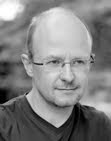Plans and Pola

Since I returned from Pakistan I feel a great drive to photograph. My hands are literally itching. Summer holidays are approaching and the coming five weeks will be largely devoted to photography. In a few hours I will travel to Tällberg, a little village 3 hours north of Stockholm. I will be part of a conference that brings together around 400 invitees to reflect on the question "How on earth can we live together?". This will be a learning and networking experience. Judging from the list of participants there will be many interesting people (Kofi Annan, Desmond Tutu, ...). That is why I am taking my Rolleiflex with me (as only camera) with 20 rolls of Fuji 160S colour film. My intention is to try and shoot as many portraits as I can.
Then after that it is more or less straight into the family holidays. We're planning to stay away for a month. First to Italy, then visiting friends in the French Alps and finally two weeks at our place in the south-west. The Italian leg of the trip is devoted to the Valtournenche, a valley which culminates in the great southern face of the Matterhorn (Cervino). I am taking my 4x5" setup to make a few pictures of the most photographed mountain in the world. Apart from this little LF study, I will stick to 24x36. My plan is to shoot a dynamic travelogue of us, as a family, moving around. I am taking quite a bit of gear with me: two Hexar bodies with a 28/2.8 (the Zeiss Biogon) and the Noctilux, the Contax RTF with two telelenses (the 85/1.4 and the 200/3.5) and likely I will also take the XPan with the 45 and the 90mm lenses. Finally, I may for a change put the M2 with the CV 15/4 in the bag as well. And plenty of film: Efke 100, Tri-X 400 and Neopan 1600.
Talking about 4x5": today we visited friends and in an impulse I grabbed the Graflex with a Pola back and a box of 54. Pola's dead. Factories are closing down. I have a little stock of 54 and 55 in 4x5" but it's dated and I need to do something with it. So I took the Graflex wanting to try some shots without a tripod. It worked reasonably well. Once the camera distance scale is calibrated one can easily shoot from the hand provided one is good in estimating distances. I have a little telemeter which helps. Picture above was taken without a tripod. I framed the subject with the Graflex' viewfinder but it turned out a little different due to parallax. But I like this composition which is rather off-kilter. Tones and light are very nice in this picture, I find. It's a real shame that this is coming to an end. Fuji still produces 4x5" instant colour emulsion and I may have a go with that one. But there is no alternative for B&W in this format ...






